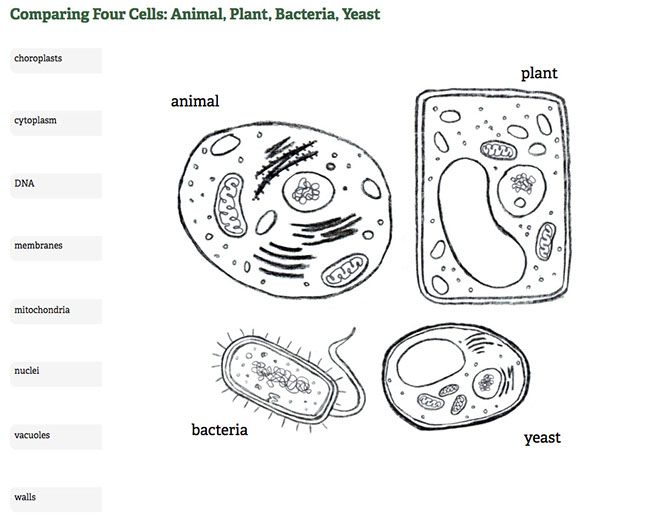- Cell Structure & Function Miss E. Mac's Class Of
- Cell Structure Diagram
- Cell Structure Ppt
- Cell Structure & Function Miss E. Mac's Classification
Please enter a term before submitting your search. Log in; Register; Log in. The main concept of cell theory is that cells are the basic structural unit for all organisms. Cells are small compartments that hold the biological equipment necessary to keep an organism alive and successful. Living things may be single-celled or they may be very complex such as a human being. Structure and composition of Cell wall The plant cell is composed of cellulose, hemicellulose, and proteins. The fungal cell wall is composed of chitin, glucans and proteins. The bacteria cell wall is composed of peptidoglycan. Cells do everything from providing structure and stability to providing energy and a means of reproduction for an organism. The following 10 facts about cells will provide you with well known and perhaps little known tidbits of information about cells. Every cell is different but there is a basic structure that is common to all cells. A cell is essentially genetic material in a gel-like substance surrounded by a membrane. The genetic material of cells is found as molecules called DNA. The DNA of a cell holds all the information that a cell needs to keep itself alive.
1. Description of Cell Structure and Function.
Cells are fundamental to the study of biology. Every living thing is composed of cells, they are the building blocks of life. All cells share similar characteristics and can be defined by the cell theory.
Cell Theory
1. All living things are composed of cells.
2. All cells arise from preexisting cells through cell division.
3. Cells contain hereditary material, which they pass to daughter cells during cell division.
4. The chemical composition of all cells is quite similar.
5. The metabolic processes associated with life occur within cells.
All cells have a few basic features in common:
1. Plasma membrane: a selective barrier which encloses a cell (plant and bacteria cells also contain a cell wall).
2. Cytosol: located inside the plasma membrane, this is a jelly-like fluid that supports organelles and other cellular components.
3. Cytoplasm: the cytosol and all the organelles other than the nucleus.
4. Ribosomes: the organelles on which protein synthesis takes place.

5. DNA: the genetic material which is contained in one or more chromosomes.

Despite the fact that all cells share the above characteristics, they can be remarkably different in size, shape and function.
Cell Structure & Function Miss E. Mac's Class Of
Prokaryotic and Eukaryotic Cells
There are two major categories or types of cells: prokaryotic and eukaryotic.
Figure (PageIndex{1}). prokaryotic cell (CC BY-NC-SA; LipeFontoura)
Figure (PageIndex{2}). animal cell (CC BY-NC-SA; LadyOfHats)
Prokaryotic cells are less organized and less dynamic than eukaryotic cells. Prokaryotes lack the organelles that are found in eukaryotic cells. Organelles are small, membraneous bodies, each with a specific structure and function. Prokaryotes do have cytoplasm, the material contained by a plasma membrane and cell wall. The cytoplasm includes ribosomes (the site of protein synthesis) and enzymes. Prokaryotes also have a nucleoid, a region in the bacterial cell interior in which the DNA is physically organized but not enclosed by a membrane. Bacteria and archaebacteria are prokaryotic.
Plant, animal and fungal cells are eukaryotic cells. The nucleus in a eukaryotic cell is bound by a nuclear envelope and contains nucleoplasm. The cytoplasm, found between the plasma membrane and the nucleus, consists of fluid and the organelles. Many organelles have membranes, such as the nucleolus, endoplasmic reticulum, Golgi apparatus, lysosomes, and chloroplast.
Cell Structure Diagram

Figure (PageIndex{3}). (CC BY-NC-SA)
Figure (PageIndex{4}). plant cell (CC BY-NC-SA; LadyOfHats)
Cell Structure Ppt
Cell Structure and Function Tutorial by Dr. Katherine Harris is licensed under a Creative Commons Attribution-NonCommercial-ShareAlike 3.0 Unported License.
Cell Structure & Function Miss E. Mac's Classification
This tutorial was funded by the Title V-STEM Grant #P031S090007.
